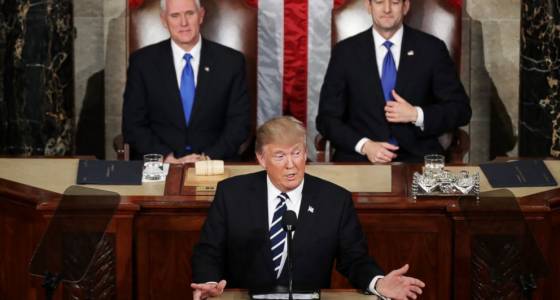Through his address to a joint session of Congress Tuesday evening, President Donald Trump made a quantity of claims about a range of issues, like unemployment and immigration.
All through the speech, a team of journalists from ABC News will determine questionable statements and supply context, detail and added info and statistics.
Continue to check back all through the evening for updates.
What Trump said: "By finally enforcing our immigration laws, we will raise wages, assistance the unemployed, save billions of dollars, and make our communities safer for everybody."
What we know: According to a significant report final fall from the National Academies of Sciences, immigrants have “little to no unfavorable effects” on the wages or employment of native-born workers in the United States.
Alternatively, the greatest influence to wages was among previously arrived immigrants. That is to say, new immigrants can effect the jobs/employment of immigrants who have been in the U.S. longer.
To the extent that adverse wage effects had been discovered, native-born teens and especially higher-school dropouts, who saw fewer hours of function, were some of the most impacted.
On crime, a number of scientific studies carried out over the past many years contradict the idea that immigrants are responsible for a disproportionate share of crime When the government doesn’t track the number of undocumented (or documented) immigrants that have committed crimes, studies have located that immigrants in the U.S. are much less likely to commit violent crime than U.S. citizens.
A 2015 study by the pro-immigrant, nonprofit American Immigration Council, discovered that “immigrants are significantly less likely to commit serious crimes or be behind bars than the native-born, and high prices of immigration are connected with lower rates of violent crime and house crime.” This holds accurate for both legal immigrants and the unauthorized, regardless of their nation of origin or level of education, according to the study.
A 2016 study published in the Journal of Quantitative Criminology basically suggests that communities that recorded substantial increases in immigration had a sharper reduction in crime compared to regions that had less immigration.
What Trump mentioned: "Ninety-four million Americans are out of the labor force."
What we know: This quantity, offered by Bureau of Labor Statistics information, is misleading. It consists of just about every particular person more than 16 years old who is not working -- people who are higher college students, individuals who are in college and persons who are retired. These groups account for more than half of the quantity Trump cites. It also contains people who are disabled or are stay-at-household parents. The Bureau of Labor Statistics puts a different quantity -– “number of unemployed persons” -- at 7.6 million folks.
What Trump stated: "In the final eight years, the previous administration has place on extra new debt than nearly all other presidents combined. We've lost far more than one-fourth of our manufacturing jobs considering that NAFTA was authorized, and we've lost 60,000 factories because China joined the Planet Trade Organization in 2001. Our trade deficit in goods with the world last year was nearly $800 billion dollars."
What we know: The national debt ballooned from $ten.6 trillion to $19.9 trillion under President Obama, according to the Treasury Department. The United States has lost roughly 1-third of its manufacturing jobs because NAFTA was authorized, according to Bureau of Labor Statistics information. Our trade deficit with the planet final year was $734 billion, according to the Census.
What Trump mentioned: "I am sending Congress a price range that rebuilds the military, eliminates the defense sequester, and calls for 1 of the biggest increases in national defense spending in American history."
What we know: President Trump has proposed a 10 % boost equal to $54 billion that would boost the Defense Department’s budget next year to $603 billion. The proposal has been met positively by Congressional Republicans, but Senator John McCain, chairman of the Senate Armed Solutions Committee, has mentioned the raise is only $18.5 billion above the level President Obama proposed for fiscal year 2018. McCain has proposed a defense price range of $640 billion for 2018 as a first step to restore military readiness.
Our editors found this article on this site using Google and regenerated it for our readers.












